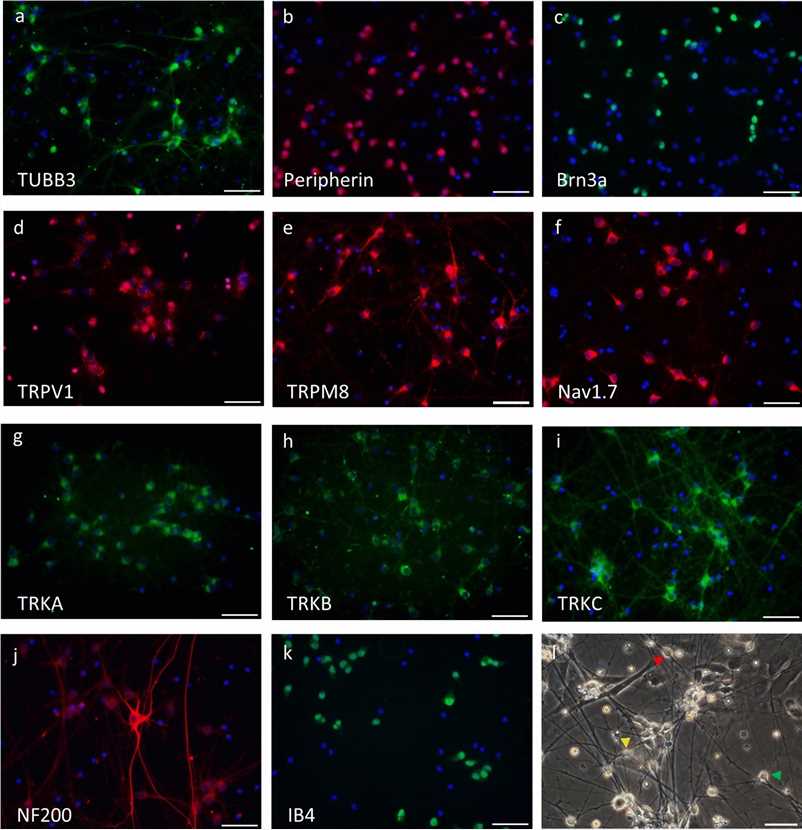Creative Biolabs offers the most advanced and comprehensive iPSC services for our customers all over the world. With years of experience, scientists at Creative Biolabs now are able to generate the neuronal cells via our iPSC differentiation technology.
With the unlimited proliferative capacity and extensive differentiation potential, human pluripotent stem cells (hPSCs) present distinct advantages than adult stem cells. In order to avoid the ethical issues, the application of human embryonic stem cell (hES cells) is replaced by human induced pluripotent stem cells (hiPSCs). which can be generated from various adult somatic cell types via the introduction of specific transcription factor combination. However, these hiPSCs cannot be used directly into patients because of the tumorigenic potential. In this case, a differentiation protocol is an essential prerequisite to direct hiPSCs into specific cell types. As such, the neural differentiation of hiPSCs enables a promising cell source for both regenerative medicine and cell therapy.
The neuronal cell differentiation from iPSC offers great promise to both basic research and clinical applications. Previously, the traditional technologies utilized to initiate neural differentiation of hiPSCs are embryoid body formation and co-cultivation with stromal cell lines. However, there are a series of disadvantages, including time-consuming preparation, low efficiency, complicated process, and variability results, largely limit their applications. In this case, now Creative Biolabs has built the high-efficient neural differentiation method based on chemically defined culture milieu and small molecular inducers. The principle of our protocol relies on the interplay of activation and inhibition of multiple developmental signaling pathways. The small molecules enable the modulation of the key developmental signaling pathways thus regulate neural differentiation of hiPSCs. Now we focus on directing hiPSCs into four major specific neuronal sublineages which are serotonergic, cholinergic/motor, dopaminergic, and serotonergic neurons. In summary, we are able to get various neuronal cell types based on our special synthetic small molecules, and more specifically potent small molecules are under development for precise control of neurogenesis.
 Fig.1 The generation of neurons from hiPSCs.1
Fig.1 The generation of neurons from hiPSCs.1
With our well-established iPSC differentiation technology, Creative Biolabs now can generate iPSC-derived neuronal cells for our clients. Based on our extensive experience and advanced platform, our service is built to meet the customer's project and specific requirements. Creative Biolabs also provide other services regarding iPSC differentiation, please feel free to contact us if you are interested in them.
Below are the findings presented in the article related to neuronal cell differentiation from iPSC.
Minami Hiranuma, et al. studied the expression of sensory neuron-related proteins and genes as well as drug responses by multi-electrode array (MEA) to analyze sensory neuron properties and functions. They confirmed the expression of sensory neuron-related genes and proteins by real-time PCR and immunocytochemistry (ICC) in order to characterize human iPSC-derived sensory neurons.
As shown in the figure below, ICC showed the expression of TUBB3 (a marker for mature neurons), Peripherin (a marker for peripheral neurons) and Brn3a (a marker for sensory neurons) at 14 DIV. In conclusion, hiPSC-derived sensory neurons express sensory neuron-related genes and proteins.
 Fig. 2 Expression and morphology of sensory neuron-associated proteins in hiPSC-derived sensory neurons.2
Fig. 2 Expression and morphology of sensory neuron-associated proteins in hiPSC-derived sensory neurons.2
References
For Research Use Only. Not For Clinical Use.